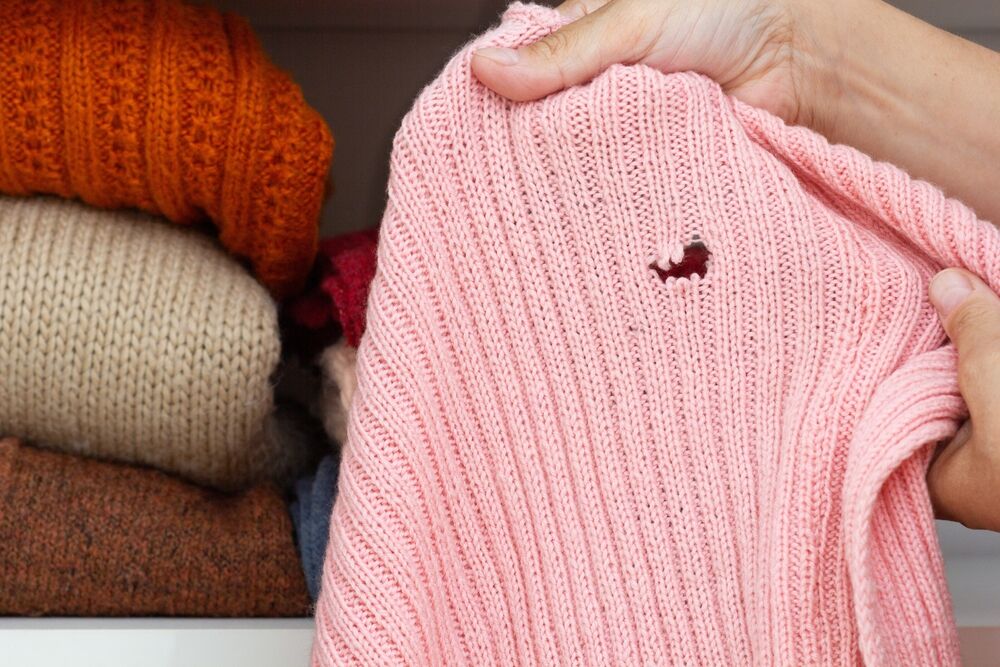
- Selling
- Prepare for sale
Moth Invasion
They might be tiny, but clothes moths are causing major headaches for homeowners across the UK. These unassuming insects have seen their population boom in recent years, with monitoring programs recording a staggering 216% increase in webbing clothes moths between 2012 and 2016. The destruction they leave in their wake—from ruined carpets to damaged clothing and upholstery—can cost thousands of pounds to remedy.
Just ask Janine Christley who laid woollen carpets throughout her cottage, only to watch them gradually disappear. “I’ve had to rip them up and replace them with synthetic carpet,” she told The Guardian: “There are big holes where they’ve eaten it away.” The moths also feasted on her woollen clothing and craft supplies.
Only two of Britain’s 2,500 moth species are to blame—the webbing (common) clothes moth and the case-bearing clothes moth. Unlike their garden cousins, which are declining, these household pests are thriving in our modern homes.
Several factors are contributing to this boom. Central heating provides the ideal breeding conditions year-round and warmer winters are extending their active season. Modern housekeeping practices are not helping, either—washing at lower temperatures (below 60 degrees) fails to kill eggs and our overflowing wardrobes, where garments sit unworn for months, offer the perfect feeding conditions for larvae.
The shift toward natural materials has also helped fuel the moth boom. Wool carpets, cashmere sweaters, and wool insulation provide the perfect food sources. “One of the things that worries me is the push for natural fibres for insulation,” says entomologist David Pinniger. “If you stick wool up in your attic, you’re going to get moths in it.”
It’s the larvae, not adult moths, that cause damage. A single female lays up to 100 eggs, which hatch within weeks. The larvae then burrow into textiles, only becoming visible once they’ve grown and the damage is done. In ideal conditions, they mature in three months but can feed for up to nine months.
Fortunately, there are some effective strategies to combat these pests:
• Regular cleaning is essential—particularly along skirting boards, under furniture, and in wardrobes.
• Vacuum-sealed bags protect seasonal clothing.
• Freezing items at -111pt°C for two weeks kills moths at all life stages.
• Sunlight exposure deters moths—they shun direct light, so regularly air clothes in sunny areas.
• Natural deterrents like cedar rings (around £14.99) and lavender oil (from £7.99) may help repel adults.
• Targeted treatments include Acana Carpet and Fabric Moth Killer Spray (£15) and moth killer sachets (£11pt.99).
• Mothproof and moth-resistant Carpets are available. Mothproof ones tend to be more expensive (and effective) or you can opt for cheaper synthetic ones.
The financial impact can extend beyond damaged possessions. A recent high-profile court case saw the daughter of a Georgian billionaire win a refund on her £32 million London mansion after discovering a severe moth infestation the seller failed to disclose. The High Court ordered the property developer to reimburse the purchase price plus £4 million in damages.
This landmark case highlights how costly concealing pest infestations can be for property sellers.
And prevention is far better (and cheaper) than cure. Clothes moths actively avoid light, preferring dark, undisturbed spaces like the back of wardrobes, under beds, underneath rugs, behind seldom-moved furniture and are particularly fond of the dark edges of carpets. So check those places regularly, be vigilant with natural fibre items, and take prompt action at the first sign of moths.
For wool lovers, consider synthetic alternatives for high-risk areas or implement strict maintenance routines. With vigilance and proper prevention, you can protect your property from these destructive pests while still enjoying natural materials in your home.











